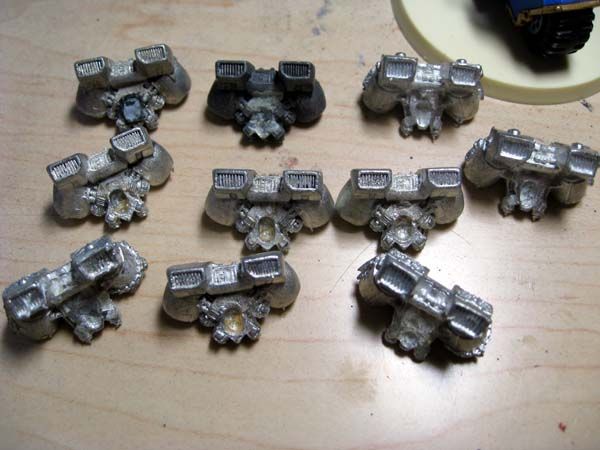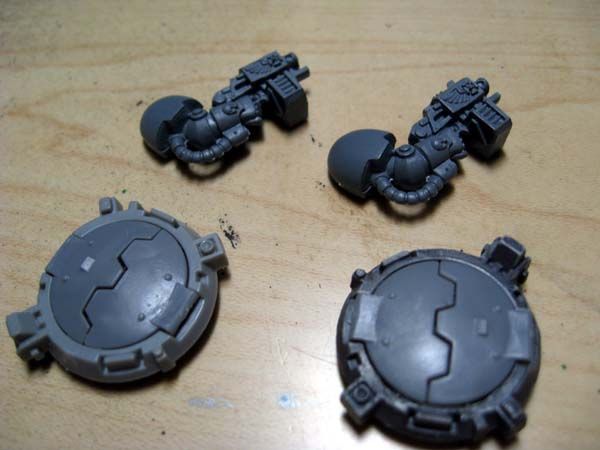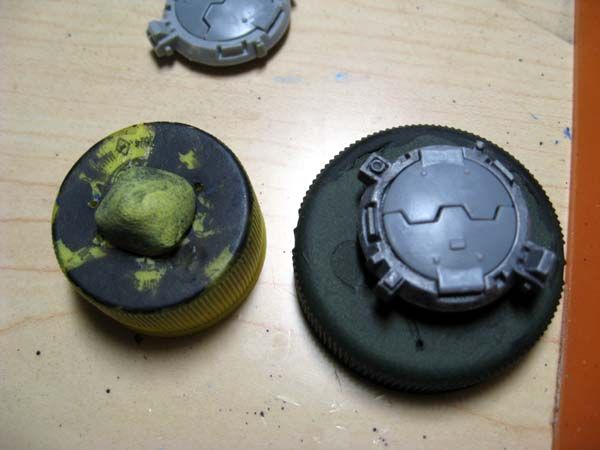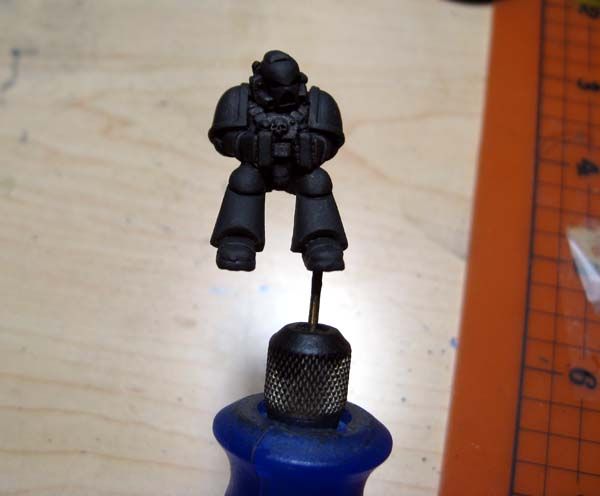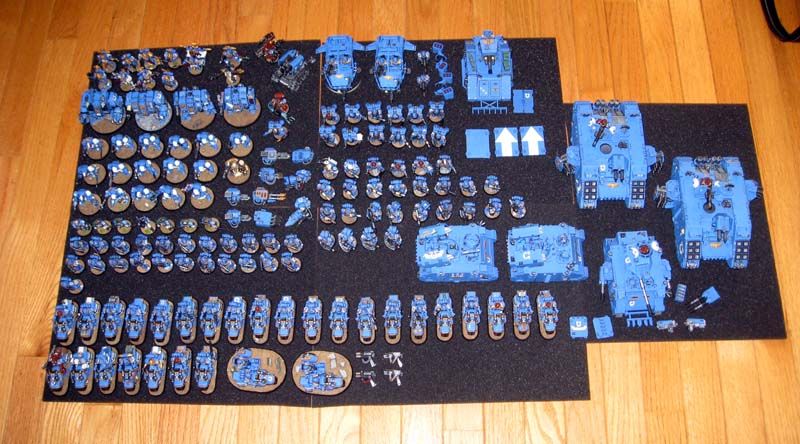Currently, I'm slaving away on a pair of additional attack bikes and an Assault Marine sergeant for use in the upcoming Standish Standoff. The Standoff is my FLGS's annual "big show" for 40K. 32 player slots, painting competition, and a $30 buy-in. I TO'd last year's event, and it was a great event.
Our community has refined the event over the last year, so this one should be just as good, if not better.
Anyhow, back to my army selection overall...
Right now I'm focusing heavily on bikes, as that is sort of my area of expertise. I've been running bike lists for a few years now, and am the local "expert" on their use. I'm trying to nail down their usage in 6th Edition, and can only do that by actually fielding them. I've got enough bikes to field three significant Troops slots, a Command Squad, and a Captain. The two additional Attack Bikes I'll be capping off soon will bring my total to four.
Alongside the bikes, I like to shuffle through my supporting units, though I strongly prefer my Fast Attack slots: Landspeeders, Attack Bikes, Assault Marines. I'll either take a Predator in my heavy slot, or load up on templates via Whirlwinds and a Thunderfire Cannon. I've got a jump pack Librarian who will sometimes make an appearance alongside the Assault Marines, but not often. I don't think I've used him in 6th Edition yet.
Bikes are largely a small arms and special weapons force that operates at the 12-24" range band. You can get plenty of melta/plasma/flamers into a bike list, but you'll have a tough time loading up on long-range weaponry, melee capability, and small arms wounds that "stick." Yes, thinned boltguns are accurate as hell, but they lose half their hits when rolling to wound.
With those things in mind, I'm leaning toward one of these options, which are based on models and parts I already have in my to-build/paint collection:
- A new landspeeder. I magnetize all my vehicle models, so this would be fully swappable to various armaments. Problem is, it would either have to eat a Fast slot, or boost my existing two-strong Landspeeder Squadron. Landspeeders are even more fragile in 6th than they were in 5th, and it's not a problem for a unit to blast all three out of the sky in a single go.
- Redo my Jump Librarian. I built my current Jump Librarian from a mish-mash of parts, and scratchbuilt his staff.
(WIP photo, Photobucket ate my finished one)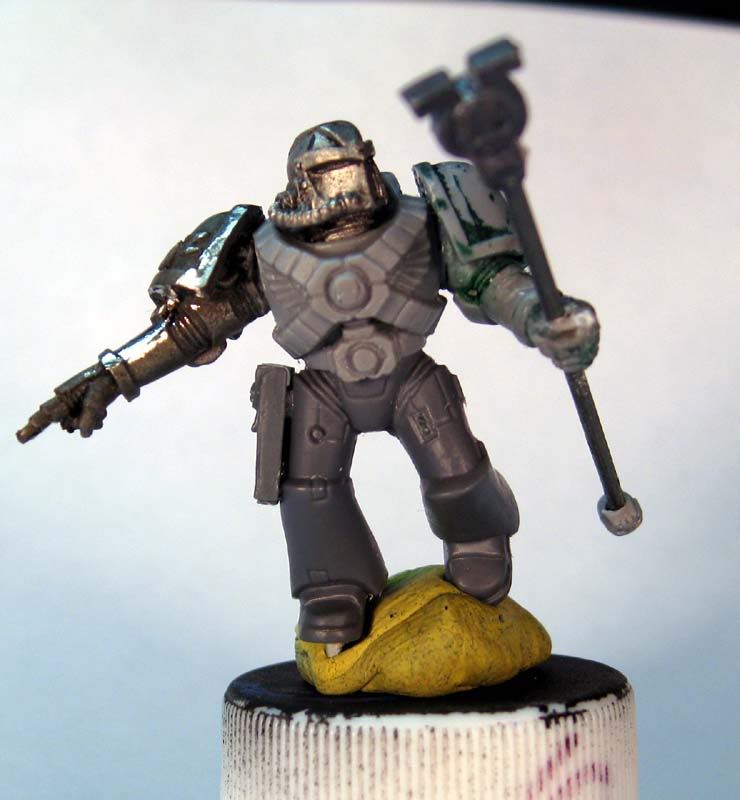
His pose is a tad wonky, and his armament is sub-optimal these days. I'd like to remake him using more modern parts, a better pose, and maybe a sword instead of a staff. - Scout Bikers. Another Fast slot, but one that goes with the rest of my army. I have the parts to make about seven or so of these guys, though only three are the new all-plastic kit. Four or so are the old, metal kit. These guys might bring another dimension to mt biker army, as they can Scout and Outflank and whatnot.
- Sternguard. This breaks from the biker/fast mold, and goes toward something I'm desperate for: reliable wounds. Hellfire rounds are HUGE now, as everyone and their brother is piling on Biomancy psykers with Iron Arm, Nurgle units, and what have you. Twin-linked bolters just don't cut it in those areas. I'd likely start with a small, 5-man unit to test the waters. Of course, a unit that small will likely end up as fodder. I'm also torn on what models to use for these. I have a ton of metal Veteran Marines of various sorts that would fit the bill, but my initial vision for Sternguard involves every member being in Mk8 armor with a targeter helmet, box-magazine bolter, and loads of gear and grenades.
- Biker Chaplain or Librarian. These would be force multipliers for my Command Squad, most likely. Very low on the priority list, honestly.











